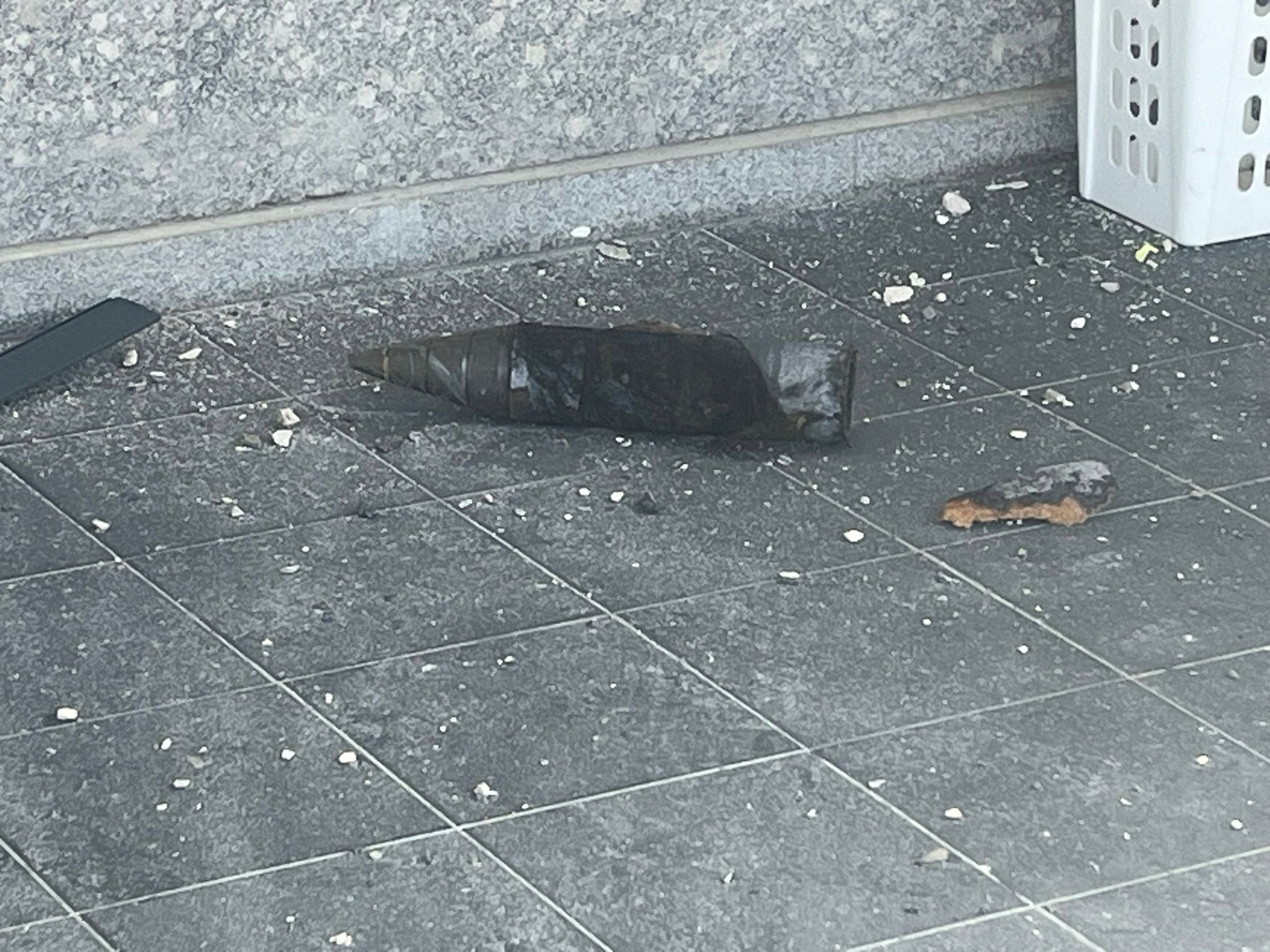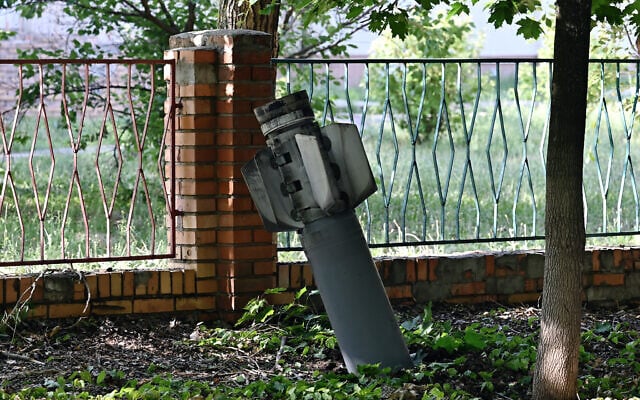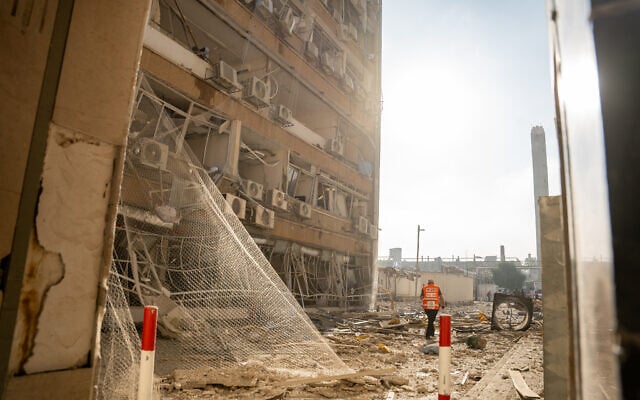



At least one ballistic missile launched by Iran at Israel in a barrage on Thursday morning was carrying a cluster bomb warhead, the Israel Defense Forces said, marking a dangerous new development after nearly a week of attacks.
The IDF Home Front Command said the missile’s warhead split while descending, at an altitude of around 7 kilometers (4.3 miles), spreading around 20 smaller munitions at a radius of around 8 kilometers (5 miles).
The munitions do not have their own propulsion or guidance and simply fall to the ground, where they are designed to explode on impact.
An Israeli military official said such a missile poses a threat to a much wider area than Iran’s other ballistic missile warheads, but the explosion from each of the cluster bombs is far smaller.
One of the small munitions, with an explosive warhead of around 2.5 kilograms, struck a home in the central town of Azor, causing damage equivalent to that of a small rocket.
Many of the other munitions did not explode, according to the military official. The unexploded ordnance still poses a danger to anyone who happens upon them.
Related: Could Iran’s missiles carry nuclear warheads? An expert breaks down the threat
Home Front Command said sappers had found and disposed of 20 bombs, but warned that it could not be sure that others were still out there.
It warned the public not to approach any missile remains they may find on the ground, which effectively act as landmines, and to alert authorities immediately if one is spotted.
There were no changes to the Home Front Command’s guidelines for civilians when it comes to cluster bomb attacks.
Human rights groups have long campaigned for cluster bombs to be banned due to the random, indiscriminate nature of the threat they pose, unlike other types of munitions that can be used to precisely target combatants or military assets while minimizing harm to civilians.
In total, 112 countries have signed a 2008 convention banning the production, storage, sale, and use of cluster munitions. Iran and Israel are not among them.
The text of the 2008 Convention on Cluster Munitions says cluster bombs “kill or maim civilians, including women and children, obstruct economic and social development… impede post-conflict rehabilitation and reconstruction (and) delay or prevent the return of refugees and internally displaced persons… for many years after use.”
Three other missiles that directly impacted sites in Israel during the Thursday morning attack were carrying conventional warheads with hundreds of kilograms of explosives.
The volley of some 20 ballistic missiles was the latest in a series of daily attacks Iran has carried out since Israel launched an offensive against the Islamic Republic last week.
Missiles carrying large warheads hit Soroka Hospital in Beersheba and residential buildings in Ramat Gan and Holon, causing extensive damage and wounding dozens, including six seriously.
It was unclear how many other missiles were carrying cluster bomb warheads, as the rest were intercepted by air defenses.
Israel says its sweeping assault on Iran’s top military leaders, nuclear scientists, uranium enrichment sites, and ballistic missile program, which began last Friday, is necessary to prevent the Islamic Republic from realizing its avowed plan to destroy the Jewish state.
Iran has retaliated by launching over 450 missiles and around 1,000 drones at Israel. So far, 24 people have been killed in Israel and hundreds have been wounded. Some of the ballistic missiles have hit apartment buildings in Israel, causing heavy damage.
Agencies contributed to this report.


